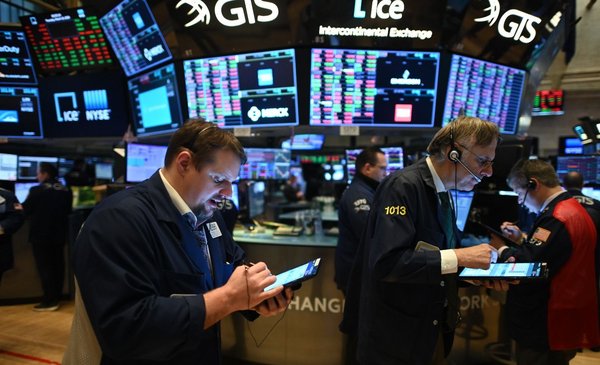A small wind of panic swept through Wall Street this week after a sharp drop in the Nasdaq, and investors are wondering if the market is correcting or if it is a prolonged depression, which would be a risk for the economy and the administration of Joe Biden.
Since its last record in mid-November, the technological Nasdaq lost more than 15%, which clearly leaves it in a correction zone, in its worst month since October 2008, in the midst of a financial crisis due to mortgage loans.
Meanwhile, the expanded S&P 500 index, more representative of the general market trend, fell 8.3% from its last maximum, at the beginning of 2022.
The imposing drop in Netflix stock (-21.79% on Friday), one of Wall Street’s darlings that hit nearly $700 a share in November to drop as low as $400, gives small investors and those with stock-exchange 401k retirement plans the creeps and trepidation.
“Your 401k is probably 40% lower than it was three months ago. I’m 65 and don’t have time to recover. Thanks Joe Biden,” one netizen complained.
“People are losing a lot of their 401k. It’s the wallet that decides the election so expect the Democrats to be utterly defeated,” added another regarding this year’s midterm congressional elections.
The prospect of an increase in interest rates by the Federal Reserve (Fed), to contain inflation that is at a maximum for almost 40 years, makes Wall Street tremble.
Although the market expects rates, near zero since the start of the pandemic, to rise a percentage point in 2022, some think the Fed failed to gauge inflation, and could tighten more severely.
From “bears” and “bulls”
The question now for traders is whether the correction can lead to a prolonged low bear market, the opposite of a bull market. While the “bear” is the pessimistic form of the stock market, the “bull” represents strength and progress.
“It is true that the market acts without rhyme or reason, except for the Nasdaq,” admitted Peter Cardillo, an analyst at Spartan Capital. Cardillo believes that the rather positive earnings season for companies will change the dynamic.
“We are still far from the ‘bear market’ but if we start to anticipate a slowdown in the economy with the rate hike, then we will continue to sell, which could make us go from a simple correction to a ‘bear market'”, explained Gregori Volokhine, portfolio manager at Meeschaert Financial Services.
The US economy should grow vigorously in 2022 after the impact of the pandemic.
But could a weakening stock market hurt growth?
“That could stop the recovery but not cause a recession,” Sam Stovall of CFRA told AFP.
“We just lowered our GDP growth forecast from 4.6% in 2022 to 4.2%, but it has more to do with the duration of inflation and expectations that the Fed will raise rates every quarter this year. “, added the expert.
For others, if the correction does not last too long, it is a healthy move in a market that is sometimes overvalued.
A key gauge of stock appreciation, the P/E ratio that compares a stock’s price to the company’s earnings per share, currently sits at an average of 21.2 for companies in the S&P 500. That means you pay more than 21 times the value of a firm’s earnings per share to buy a stock.
According to calculations by Sam Stovall, historical statistics show that this ratio could drop to 19.7 in an environment of 10-year Treasury rates between 1.75% and 2.25%. “That corresponds to a 15% drop in the S&P 500, so we are in the middle of a correction,” the expert said.
“History tells us that we could double down, to -30%” if the ratio falls to 16.2, its historical average in a context of similar rates, says the specialist.
But the story also brings a certain reassurance. “Wall Street is opportunistic,” says Stovall. “After a correction, investors come back with a vengeance and on average, it takes no more than four months to break even,” he concludes.
Source: AFP

















